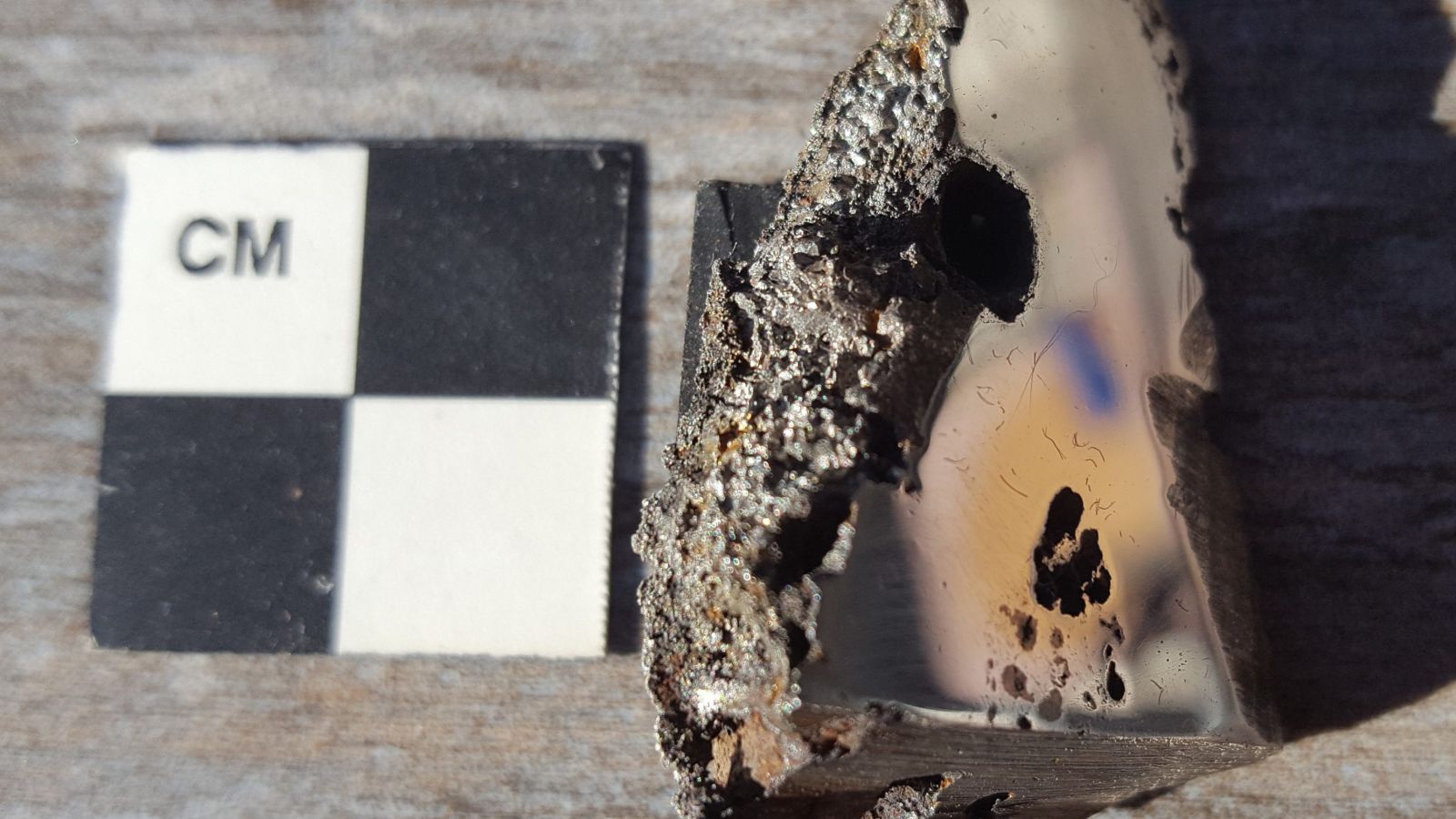(CNN) — Scientists have discovered two never-before-seen minerals in a 15.2 metric ton meteorite.
Minerals were found in a 70-gram meteorite discovered in Somalia in 2020, making it the ninth largest meteorite ever discovered. Press release from the University of Alberta.
Chris Herd, curator of the university’s meteorite collection, obtained samples of the space rock so he could classify it. While he was examining it, he noticed something unusual: some parts of the sample could not be identified under the microscope.
So he decided to seek the advice of Andrew Locock, head of the university’s electron microprobe laboratory, who has experience describing new minerals.
“The first day he did some analysis, he said, ‘You’ve got at least two new minerals,'” Herd, a professor in the university’s Department of Atmospheric and Earth Sciences, said in a statement.
“That’s unique. Most of the time it takes a lot of work to say there’s a new mineral,” he added.
One mineral’s name, ‘elalite’, comes from the space object, the “El Ali” meteorite, as it was found near the city of El Ali in central Somalia.
Herd named the second mineral ‘elkinstonite’ after Lindy Elkins-Tanton, vice president of Arizona State University’s Interplanetary Initiative. Elkins-Daunton is a Regents Professor in the university’s School of Earth and Space Studies and principal investigator of the upcoming study. Psychiatric work A tour of the metal-rich asteroid that orbits the Sun between Mars and Jupiter, from NASA. According to the space agency.
“It’s how the cores of planets form, how these iron and nickel cores form, and the closest analog we have is iron meteorites,” Herd said. “It made sense to name a mineral after him, thus recognizing his contribution to science.”
The International Mineralogical Society’s approval of the two new minerals in November this year “signals that the work is solid,” said Oliver Shaner, a mineralogist and research professor in the Department of Geosciences at the University of Nevada, Las Vegas.
“Anytime you find a new mineral, the actual geological conditions, the chemistry of the rock, were different than what was found before,” Herd said. “That’s what makes it so exciting: this particular meteorite contains two minerals that are officially described as new to science.”
The role of laboratory-generated minerals in discovery
Lowcock’s quick identification was possible because similar minerals had been created synthetically before, and he was able to match the composition of the newly discovered minerals to their man-made counterparts, according to the University of Alberta report.
said Alan Rubin, a meteorologist and former associate professor and research geochemist in the Department of Earth, Planetary and Space Sciences at the University of California, Los Angeles. “They can create new compounds, some for research purposes to see what’s physically possible, others… ‘We’re looking for a compound with some property for some practical or commercial use, like conductivity, high voltage, high temperature fusion.
“When a researcher finds a previously unknown mineral in a meteorite or terrestrial rock by chance, then often the same compound has already been created by materials scientists.”
Both new minerals are iron phosphates, Tschauner said. A phosphate is a salt or ester of phosphoric acid.
“Phosphates in iron meteorites are secondary products: they form by oxidation of phosphides…which are the rare primary constituents of iron meteorites,” he explained by email. “So, the two new phosphates tell us about the oxidation processes that occurred in the meteorite material. Whether the oxidation occurred in space or on Earth after impact remains to be seen, but to my knowledge many of these meteoric phosphates formed in space. In either case, water may have been the reactant that caused the oxidation.”
The findings were presented at a symposium on space exploration at the University of Alberta in November. Rubin said the revelations “broaden our view of the natural materials that can be found and formed in the solar system.”
The El Ali meteorite, where the minerals came from, appears to have been sent to China in search of a buyer, Herd said.
Meanwhile, researchers are still studying minerals and third parties to find out what conditions were in the meteorite when the space rock formed. He added that the newly discovered minerals could have exciting implications in the future.
“Anytime a new material is known, materials scientists are also interested because of the potential applications in a wide range of things in society,” Herd said.






